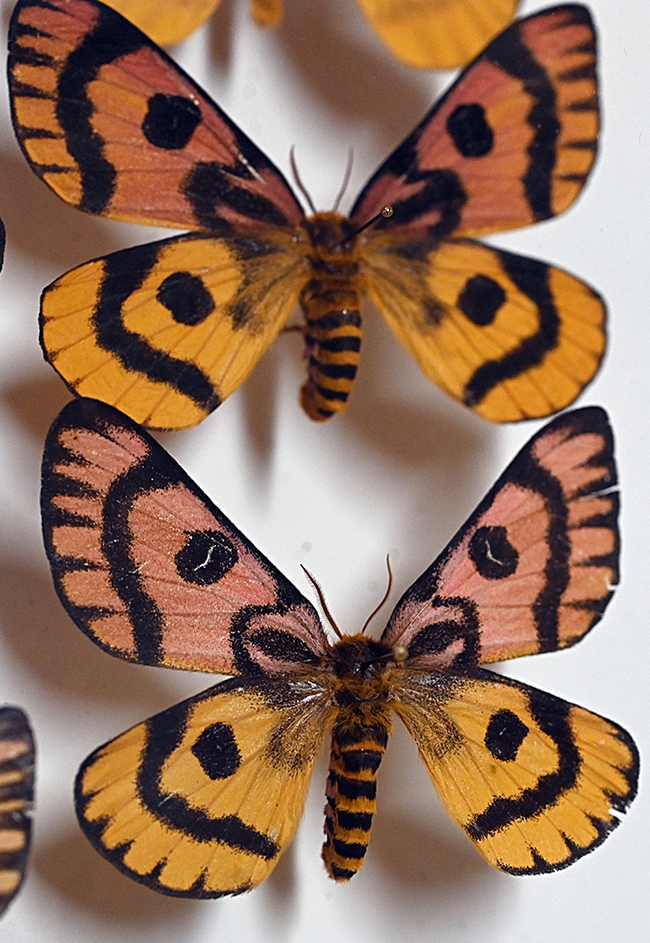
Those who attended the Bohart Museum of Entomology open house on social wasps, held Jan. 20, learned all about them from entomologist Jeff Smith, curator of the lepidoptera collection, and Bohart associate Greg Kareofelas.
Many of the day-flying, beautifully colored sheep moths are commonly mistaken for butterflies.
"We have around 50 drawers of moths in the genus Hemileuca, often called Buck Moths, and the genus is comprised of 24 species in North America," Smith said. "It is likely this will expand as studies with DNA more accurately define species and relationships. The "Sheep Moth," Hemileuca eglanterina, takes up around 10 drawers in the Bohart Museum. It is a highly variable species, ranging from nearly black to pink/yellow to the typical orange with black markings. In all, we likely have around 400-500 specimens of this species."
Smith takes a special interest in the Bohart Museum's sheep moths, as many were collected by his brother, the late Mike Smith, a 20-year U.S. Air Force veteran. Mike, who moved to Folsom following his retirement, "raised many hundreds of the moths in the Hemileuca from caterpillars and eggs," Jeff said. "I suspect his goal (Mike died in 2003) would have been to make some sense of the great geographic variability in some of the species, such as Hemileuca hera, which ranges from nearly white to nearly black, depending on the locale it is found in."
"Given the theme of 'social wasps' for the event, visitors were fascinated by the great many moths that so closely resemble wasps and bees, in the families Sesiidae (clearwing moths), Sphingidae the genus Hemaris) and Erebidae, the subfamily Arctiinae or tiger moths," Smith said. "They also enjoyed species such as the Atlas Moths, Luna Moth, Death Head Moth, and others that we guided them to."
There's much misinformation on the Internet about "sheep moth infestations" on sheep, Smith said. "The sheep moth, Hemileuca eglanterina, absolutely does NOT feed on anything to do with sheep. The larvae eat only plants. However, one website said that moth larvae--presumably clothes moths--will feed on the wool while it is still on a sheep, which is FALSE. These larvae feed only on things long gone from any animal, like hair, feathers, wool, felt, etc."
The Bohart Museum, directed by UC Davis distinguished professor Lynn Kimsey, is located in Room 1124 of the Academic Surge Building, 455 Crocker Lane, UC Davis campus. It houses a global collection of eight million insect specimens, plus a live petting zoo (Madagascar hissing cockroaches, walking sticks, taranatulas and more) and an insect-themed gift shop, stocked with T-shirts, hooded sweatshirts, books, posters, and jewelry.
The next Bohart Museum open house is from 10 a.m. to 2 p.m., Saturday, Feb. 10, during the 13th annual UC Davis Biodiverity Museum Day. It is one of 10 museums or collections open, with varying hours. The event is free and family friendly.
Attached Images:
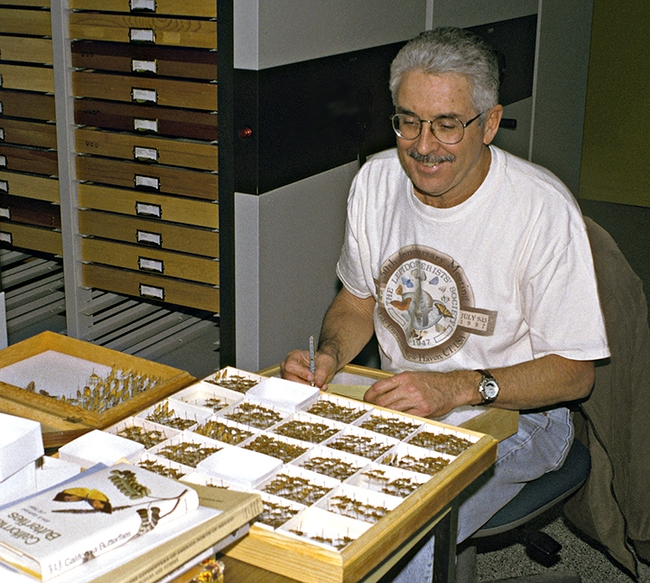
The late Mike Smith, a 20-year U.S. Air Force veteran who retired in Folsom, looks over his collection. The sheep moths he collected are now in the Bohart Museum. He passed in 2003. (Photo courtesy of Jeff Smith, curator of the Bohart Museum's lepidoptera collection)
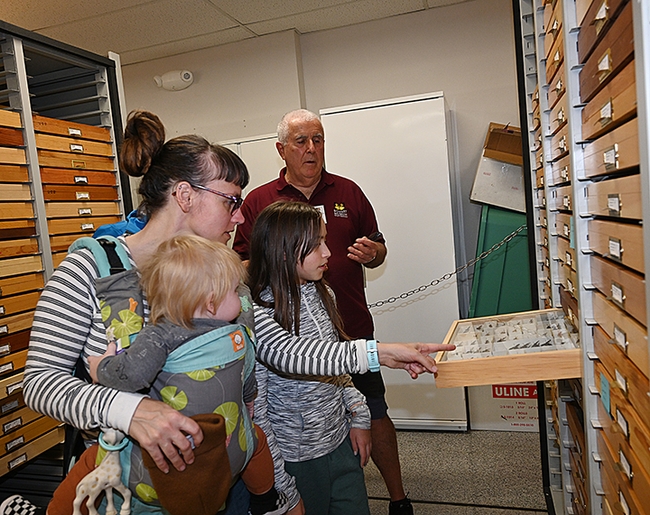
Entomologist Jeff Smith, curator of the lepidoptera collection at the Bohart Museum of Entomology, chats with Sacramento residents Skylan Potter, 11, and her mother, Camille Potter, holding son, Kehlan. (Photo by Kathy Keatley Garvey)
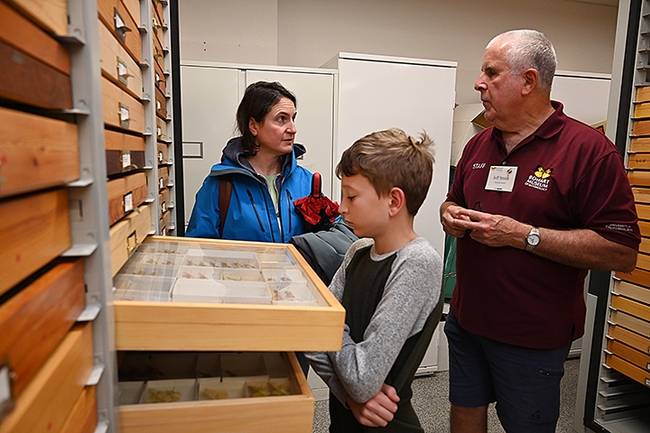
Entomologist Jeff Smith, curator of the lepidoptera collection at the Bohart Museum of Entomology, explains moth specimens to Katie Dietrich and her son, Andrew, of Davis. (Photo by Kathy Keatley Garvey)
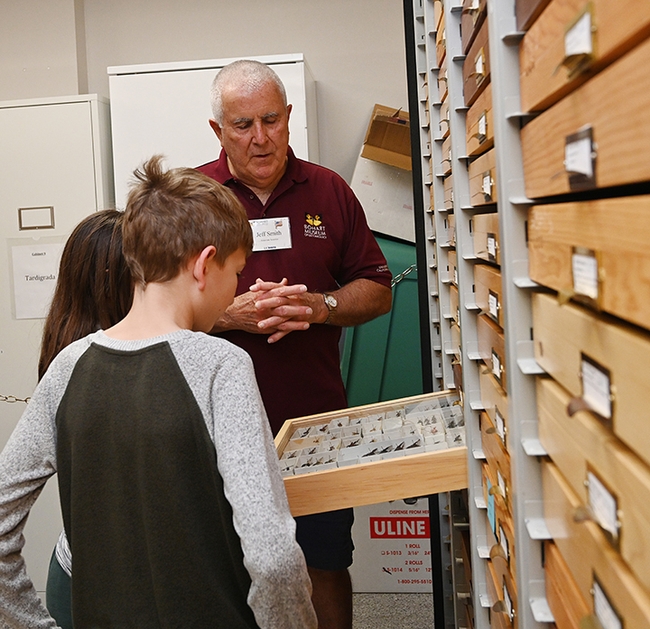
Entomologist Jeff Smith, curator of the Bohart Museum's lepidoptera collection, shows moths to Andrew Dietrich of Davis. (Photo by Kathy Keatley Garvey)
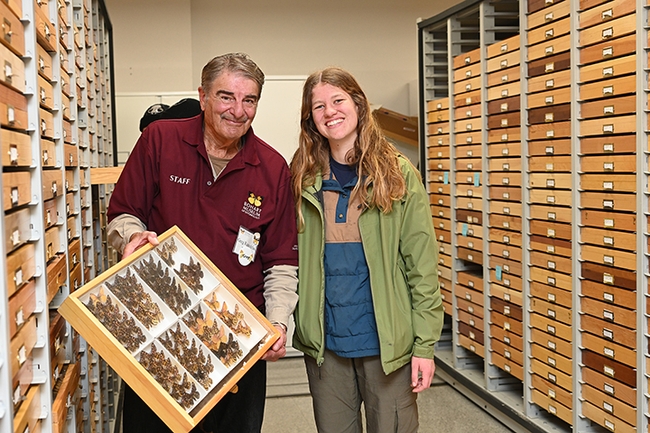
Bohart Museum associate Greg Kareofelas, and scientist Sophia Acker of the Del Castillo lab, UC Davis Department of Plant Pathology, display a drawer of sheep moths, Hemileuca eglanterina. (Photo by Kathy Keatley Garvey)